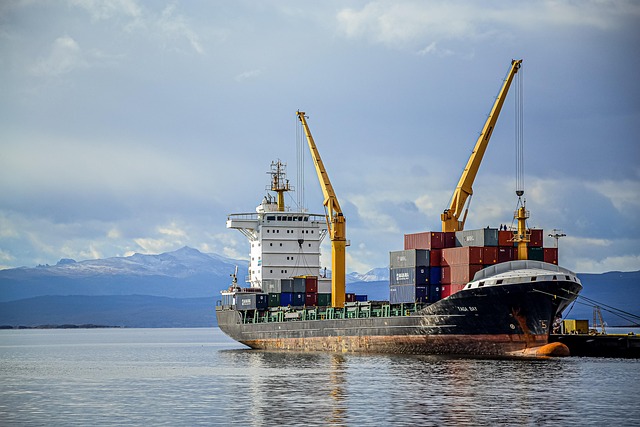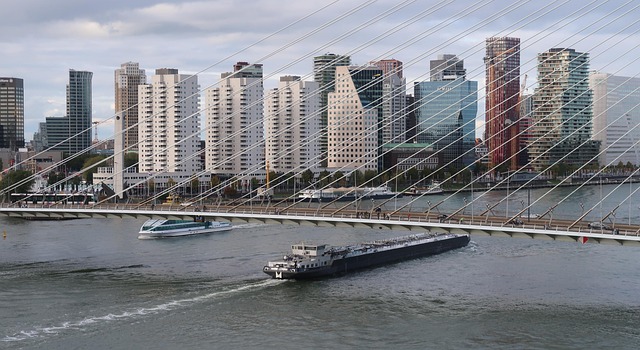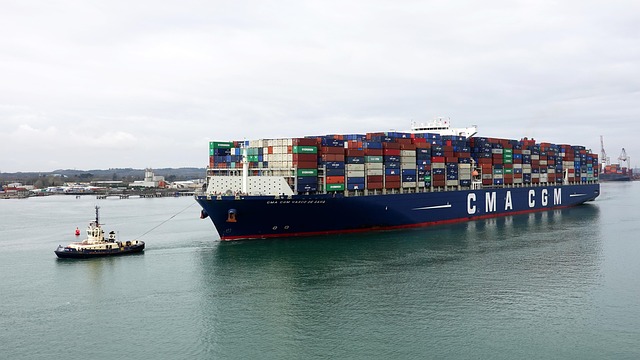Stackable shipping containers revolutionize container shipping with vertical stacking, reducing handling times and labor costs. They offer modular designs for diverse cargo needs, enhancing flexibility in leasing services. This innovation streamlines intermodal transfers, simplifies processes, optimizes space, and reduces costs in logistics and transportation, making them a key development in the industry.
Stackable shipping containers are revolutionizing intermodal transfer processes, offering a game-changing solution for logistics. In today’s bustling global trade landscape, efficient container handling is paramount. This article explores how stackable containers unlock unprecedented efficiency, simplify complex intermodal transfers, and drive down operational costs. From their evolution to real-world success stories, discover why these innovative shipping solutions are a must-have for modern supply chains.
- Unlocking Efficiency: Stackable Containers' Promise
- Intermodal Transfer: A Complex Logistics Puzzle
- Shipping Containers' Evolution: From Standardized to Stackable
- Streamlining Processes: Benefits of Stacking
- Case Studies: Real-World Success Stories of Stackable Containers
Unlocking Efficiency: Stackable Containers' Promise

Unlocking Efficiency: Stackable Containers’ Promise
The advent of stackable shipping containers has revolutionized container shipping and intermodal transfer processes. By enabling efficient vertical stacking, these innovative containers streamline operations at ports, rail yards, and warehouses, significantly reducing handling times and labor costs. The ability to neatly organize and store multiple containers on top of each other minimizes the space required for storage and facilitates faster loading and unloading during transport, whether by sea, rail, or road.
This modularity also enhances flexibility in container leasing and rental services, catering to diverse shipping needs. With various types like refrigerated, high cube, open top, and flat rack containers available, businesses can tailor their container choices based on the nature of cargo, be it perishable goods, oversized items, or standard freight. This versatility not only optimizes space but also contributes to a more sustainable and cost-effective logistics ecosystem, transforming the traditional shipping crate into a dynamic component of modern container transport and depot management.
Intermodal Transfer: A Complex Logistics Puzzle

Intermodal transfer, a critical link in global supply chains, involves seamlessly transitioning cargo between different modes of transport—from sea to rail or road—without any disruptions or delays. This complex logistics puzzle is characterized by diverse infrastructure, varying container types, and stringent time windows for deliveries. Traditionally, managing this process has been challenging due to the lack of standardization and compatibility among different carriers and their equipment.
The heart of the challenge lies in ensuring that the cargo moves smoothly from one mode to another without the need for manual handling or time-consuming re-loading. This is where stackable shipping containers come into play, offering a revolutionary solution. By providing a uniform and modular system, these containers simplify intermodal transfers, enabling efficient stacking and transport across various modes of freight container, ultimately streamlining the entire process from container leasing to container rental, making it faster, safer, and more cost-effective.
Shipping Containers' Evolution: From Standardized to Stackable

The evolution of shipping containers has been a game-changer in the logistics and transportation industry. What started as standardized, single-use metal boxes has transformed into a versatile and innovative solution—the stackable shipping container. This design shift revolutionized container shipping by enhancing efficiency and reducing costs during intermodal transfers.
Initially, freight containers, also known as sea containers or ISO containers, were designed to be stacked horizontally, requiring specialized equipment and time-consuming loading/unloading processes at container depots. However, the introduction of stackable containers changed this landscape. These containers are built with a unique, vertical stacking mechanism, allowing for compact storage and efficient transport. This innovation enables multiple containers to be stacked on top of each other, reducing the need for extensive handling equipment and optimizing space during transit and storage in container terminals or warehouses, as well as container rental and leasing services.
Streamlining Processes: Benefits of Stacking

The ability to stack shipping containers offers significant advantages when it comes to streamlining intermodal transfer processes. By eliminating the need for manual handling and reducing the time required for loading and unloading, stacking enhances efficiency across the board. This method allows for faster container movement, minimizing delays at ports and rail yards, and ultimately expediting the entire supply chain process.
In a typical intermodal transfer, containers must be carefully maneuvered, often involving heavy machinery and multiple workers. Stacking simplifies this by creating a modular system where containers can be stacked in various configurations, both vertically and horizontally. This versatility enables optimal utilization of space, both during transport and at container depots, maximizing cargo capacity and reducing the need for extensive storage areas.
Case Studies: Real-World Success Stories of Stackable Containers

In the realm of container shipping, stackable containers have emerged as game-changers, revolutionizing intermodal transfer processes across various industries. Real-world success stories highlight their effectiveness in streamlining logistics and enhancing efficiency. For instance, a leading global retailer encountered challenges in transporting goods from offshore suppliers to inland distribution centers due to limited space and handling constraints. By implementing stackable shipping containers, specifically the high cube container, they significantly reduced loading times at ports and optimized storage within warehouses. This case study demonstrates how these versatile freight containers can adapt to diverse needs, ensuring faster container transport and efficient cargo management.
Another notable example involves a regional logistics company specializing in perishable goods transport. By converting their fleet with refrigerated containers (refrigerted container), they achieved remarkable results. Stacking these modular containers on flat rack ships during sea transportation and then using them for immediate storage at the receiving depot, they minimized temperature fluctuations and reduced handling damage. This innovative approach not only enhanced the integrity of sensitive cargo but also lowered operational costs associated with container leasing and rental. These success stories underscore the profound impact stackable shipping containers can have on various facets of container shipping, from container dimensions and capacity to storage solutions and office container applications, ultimately fostering a more robust and flexible logistics ecosystem.
Stackable shipping containers have emerged as a game-changer in intermodal transfer processes, offering significant advantages over traditional methods. By streamlining operations and enhancing efficiency, these innovative containers are revolutionizing the logistics industry. As seen through various case studies, their benefits extend to reduced handling time, cost savings, and improved cargo security. The evolution of shipping containers towards stackability has undoubtedly simplified complex logistics puzzles, making intermodal transfer more accessible and robust in today’s digital era.
